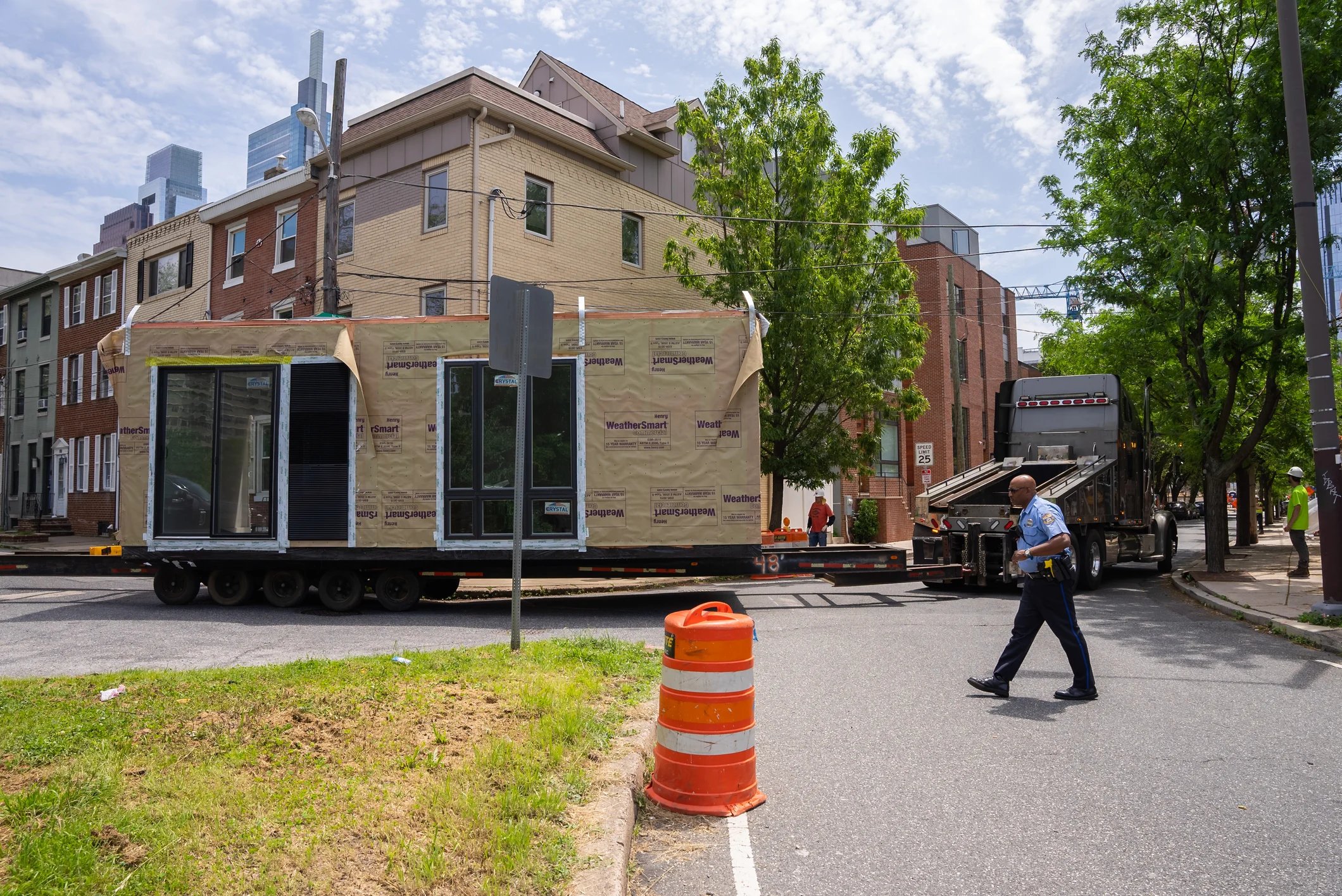Contents

In an era marked by the unpredictable impacts of climate change, the need for adaptive and resilient solutions in the construction industry has never been more urgent. The traditional methods of construction, with their rigid structures and lengthy timelines, are facing challenges in the wake of extreme weather events, rising sea levels, and other climate-related disruptions.
Enter modular construction, a forward-thinking approach that is revolutionizing the way we respond to natural disasters when it comes to not just rebuilding homes, but whole cities.
The Town Threatened by an Active Volcano
The community of Grindavik in Iceland once was the home to a lively and flourishing fishing community. On February 8th, 2024, a fissure eruption near Sylingarfell released molten lava, forcing the population of 3,800 to evacuate. Now, the majority of the homes and other structures that contained the livelihoods of its residents lie blackened from a volcanic disaster.
Residents fortunate enough to have their homes located outside the path of the lava's destruction now find themselves in a state of uncertainty. While their homes may be unscathed, air quality remains a concern and the memory of the tragedy lies around them.
There’s no stopping a natural disaster like a volcanic eruption, but what if there was a way to mitigate the destruction? What if there was a way to lift and transport an entire city to a safer location?
Modular Construction - Beyond Trailers and Homes
Modular construction, also known as off-site construction, is when a structure is built in a factory in another location while the foundation is prepared on the site. Once completed, the structure is transported by truck to the prepared foundation where the the factory-built structure, or module, is craned into position. A team then adds the finishing touches. This simultaneous workflow allows projects to be completed in half the time of traditional construction.
Most people think of trailer homes when they hear the phrase “modular construction”. But, this method has evolved significantly, demonstrating its capability to achieve far more than initially perceived.
Modular construction is quickly becoming the preferred method for large-scale projects like hotels, apartments, hospitals, and more. The ability to harness precision and speed without compromising quality makes modular construction a game-changer in modern building practices. And speed isn’t the only benefit. Structures built through modular can actually be transported (yes, even multi-story 100+ unit apartment buildings.)
In the face of a changing climate, we need the built world to be more flexible. This makes modular construction a better path forward.
Moveable Buildings: How it Works
Volumetric Building Companies have developed a system that allows large buildings to be transported, going beyond the transporting of small single-family homes. This system utilizes a steel system, ISO blocks, and a unique bolt system that allows buildings assembled with modules to be broken down, transported, and reassembled on its next site with ease. This can be done over and over again as needed.
Speed is still an advantage here. From design conception to final touches of construction, a 3 story building with 60 units could be completed in as little as 10-12 weeks. With the right parties involved, this could go even faster. Governments and modular companies can collaborate to develop pre-designed plans that can be manufactured and stored to use in the event of a disaster. In places like Alaska, Hawaii, and Iceland, where communities are isolated and don’t hold a lot of infrastructure, this could revolutionize disaster response efforts.

While initially ideal for remote regions, the collaborative efforts between governments and modular construction industries can set a precedent for global adoption. The principles of rapid response, cost-effectiveness, and adaptability can be applied to diverse settings, ensuring that communities worldwide are better equipped to face the increasing frequency and intensity of natural disasters.
Learning from Disasters
Imagine a scenario where Grindavik embraced modular construction. Imagine how quickly the families affected by the eruption could return to their lives.
The aftermath of the Grindavik evacuation highlights the importance of rebuilding swiftly and future-proofing structures against unforeseen disasters. Modular construction's accelerated timelines not only facilitate a faster recovery but also reduce the emotional and economic toll on displaced communities. By integrating resilient and adaptable designs, modular construction ensures that structures can withstand evolving environmental challenges, providing a sustainable solution for the long term.
Moving Forward in a Climate Crisis
As we reflect on the potential of modular construction to reshape disaster response, particularly in the context of a city in Iceland evacuated due to a volcanic eruption, it becomes evident that innovative solutions are paramount in navigating the challenges posed by a changing climate. The urgency of the climate crisis demands not only immediate relief for affected communities but also a forward-thinking approach to building resilient cities.
Volumetric Building Companies (VBC) stands at the forefront of developing these new modular systems to help bring disaster relief to affected families and communities. With climate change continuing to intensify, a proactive approach is necessary to ensure the longevity of homes. If you are interested in learning more about modular construction, contact VBC today.



